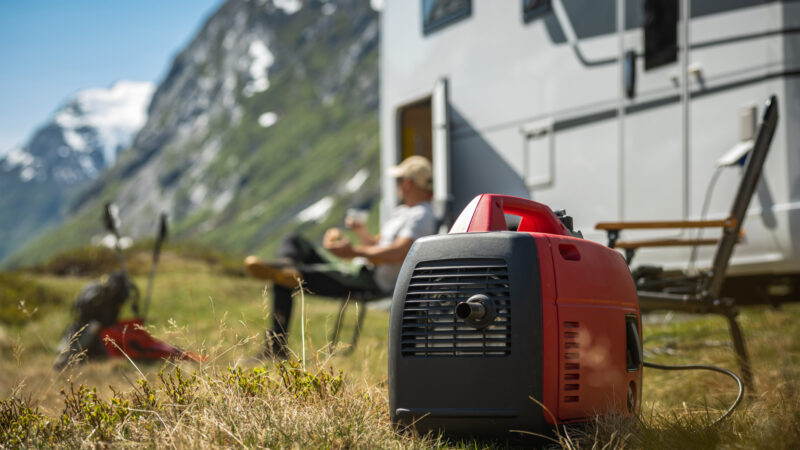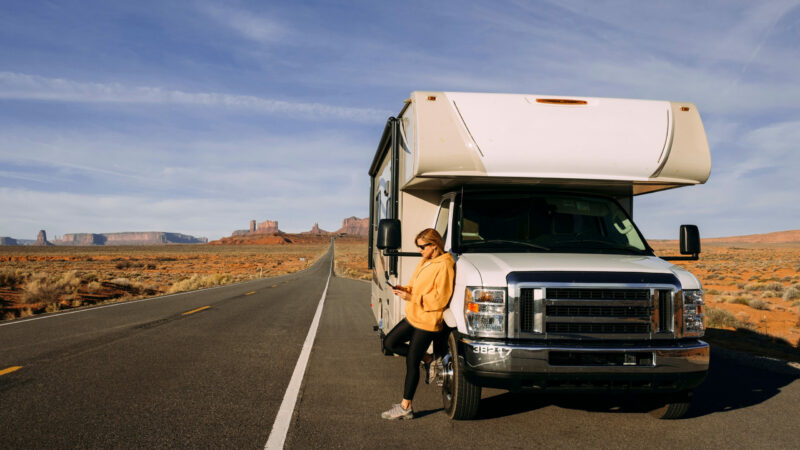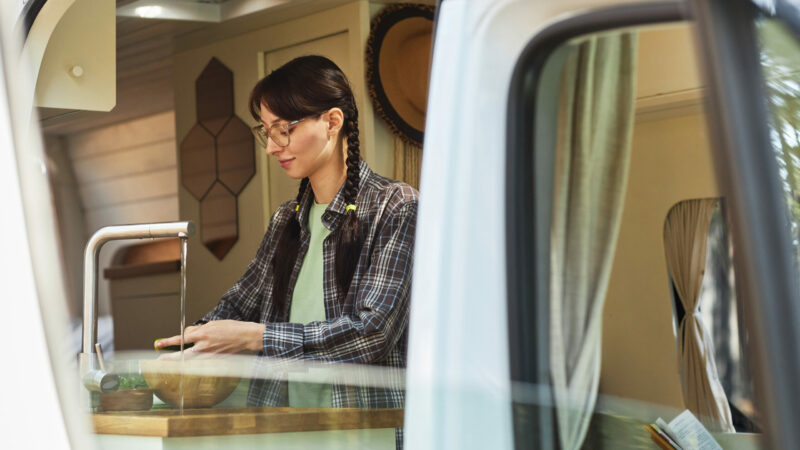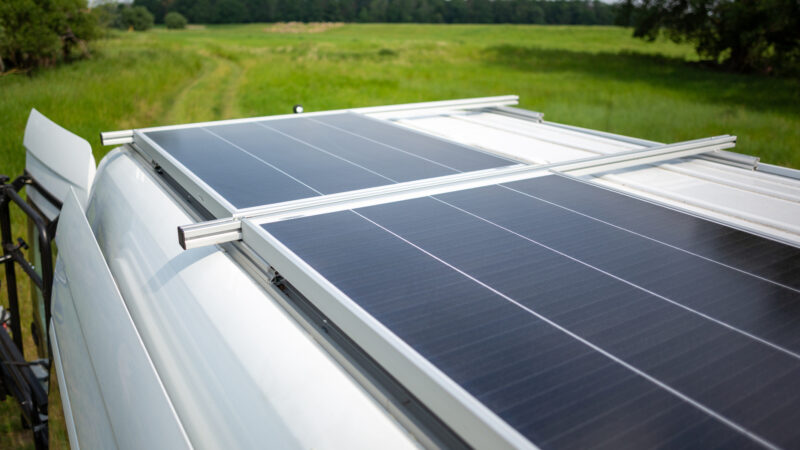Everything you Need to Know about RV Antifreeze | I Heart RVing

Updated: December 12, 2024
As cold weather approaches and winter winds blow, RV travel plans typically get put on hold for the season. And within the RVing community, you’ll often hear talk of “the pink stuff” (i.e., RV antifreeze) to prepare the RV for its long winter nap.
If you’re new to this community, you may be wondering why people are talking about “pink stuff,” what it is, and where to get some for your RV.
Want More From I Heart RVing? Subscribe Today!
What is the “Pink Stuff”?
“The pink stuff” refers to a specialized type of antifreeze made specifically for RVs. Unlike the antifreeze used in cars and trucks, RV antifreeze is formulated differently and should never be substituted with automotive antifreeze.
So, what exactly is RV antifreeze? Simply put, it’s a nontoxic solution designed to lower the freezing point of any residual water in your RV. This crucial product helps protect pipes and fittings from the damage caused by freezing water, which expands and exerts pressure that can lead to cracks, leaks, or even burst pipes.
RV Antifreeze vs. Car Antifreeze
While both RV antifreeze and car antifreeze are designed to prevent freezing, they serve entirely different purposes. Car and truck antifreeze is specifically formulated for engines to protect the cooling system. However, it is highly toxic and must be kept far away from any potable water sources. Even a small amount can be extremely dangerous, so never use automotive antifreeze in your RV’s freshwater system.
RV antifreeze, on the other hand, is a safer, nontoxic alternative designed for winterizing your RV’s plumbing system. While it’s not meant for consumption (it tastes terrible and isn’t good for you in larger amounts), it is considered safe for humans when used as directed. That said, it can pose a danger to pets—particularly cats and dogs—if ingested.
Pets may be drawn to the sweet scent and taste of propylene glycol, a common ingredient in RV antifreeze. Unfortunately, even small amounts can cause severe health issues, such as anemia or liver failure, especially in cats. To avoid a costly vet visit, take extra precautions during the winterizing process if you have pets in or around your RV.
Despite these concerns, propylene glycol-based RV antifreeze remains the safest option available. Just be sure to thoroughly flush it out of your system when de-winterizing your RV before hitting the road again.
Why Use Non-Toxic RV Antifreeze?
The main reason to use nontoxic RV antifreeze is to protect your freshwater pipes in your RV. When added to the water system, RV antifreeze can lower the freezing point. This then prevents any remaining water from expanding when temperatures drop below freezing, which can damage the pipes, leading to leaks or even bursting pipes.
Some types of RV antifreeze also help protect the seals, such as in faucets or toilets, by acting as a lubricant.
Choosing RV Antifreeze for Your Rig
There are three common types of RV antifreeze: ethanol-based, propylene glycol-based, or (less commonly) an ethanol/propylene blend.
Ethanol is an alcohol, and propylene glycol is considered a double-strength alcohol. Both types act to lower the freezing point of any water left in the tank. It is recommended you remove as much water as possible before adding RV antifreeze, especially in parts of the country that get really cold. And the type as well as the brand of antifreeze can determine how effective the RV antifreeze is for your uses.
In more moderate climates, a less expensive ethanol RV antifreeze may be “enough.” However, the most common type of RV antifreeze is propylene glycol as it is often preferred due to several advantages. For example, propylene glycose-based products:
- Are non flammable, so they’re safer than ethanol-based antifreeze
- Are lubricating, so they are better at protecting the seals in your plumbing system
- Leave less residual taste or smell than ethanal-based varieties, which can also take longer to wash out of the system
- Are nontoxic to humans when used as directed, even in the freshwater system.
One note of caution: there are propylene glycol products made from recycled chemicals. These, however, should be avoided as they typically use antifreeze recycled from airports. This material then is often contaminated with other airline chemicals, which typically aren’t safe to drink, even in limited quantities.
Pure, virgin propylene glycol RV antifreeze products include:
- Walmart’s Super Tech RV
- Walmart’s Marine Antifreeze
- Camco’s Easy Going 50 brand
Alternatively, you can skip the pink stuff altogether by ensuring all water is completely blown out of the plumbing system with high air pressure, perhaps adding a small amount of antifreeze to plumbing p-traps to lubricate and prevent any leftover liquid from freezing.
How to Use RV Antifreeze
RV antifreeze can be used in several ways to protect your RV during cold weather. It’s typically added after clearing the pipes of water, but it can also be combined with any remaining water once the pipes are as drained as possible. For added protection, pour the pink stuff into p-traps in your sinks and shower to prevent freezing and potential damage.
Additionally, RV antifreeze can be added to your gray and black tanks. This ensures that waste won’t freeze if you’re camping in freezing temperatures, allowing you to easily dump the tanks at the end of your trip.
When it’s time to hit the road again, you’ll need to de-winterize your RV. This involves flushing the freshwater tank and the entire system with clean water to make it safe for consumption. Always drain the antifreeze at an approved dump station, sewer connection, or septic tank. Even though RV antifreeze is labeled as nontoxic, it can still harm animals and the environment, especially if it seeps into a water source.
RV Antifreeze Takeaway
Whichever version or method you choose, it’s important to winterize your RV to protect the plumbing system. Remember, most RVs aren’t designed to be well-insulated when the temperatures drop well below zero. And many have somewhat exposed plumbing systems that are more susceptible to damage from freezing temperatures.
Protecting the pipes, water pumps, p-traps, holding tanks, and water heaters is crucial. Otherwise, you’re likely to uncover burst pipes, leaks, and expensive repairs to make before you can hit the road in the spring. And no one’s got time (or money) for preventable repairs.






